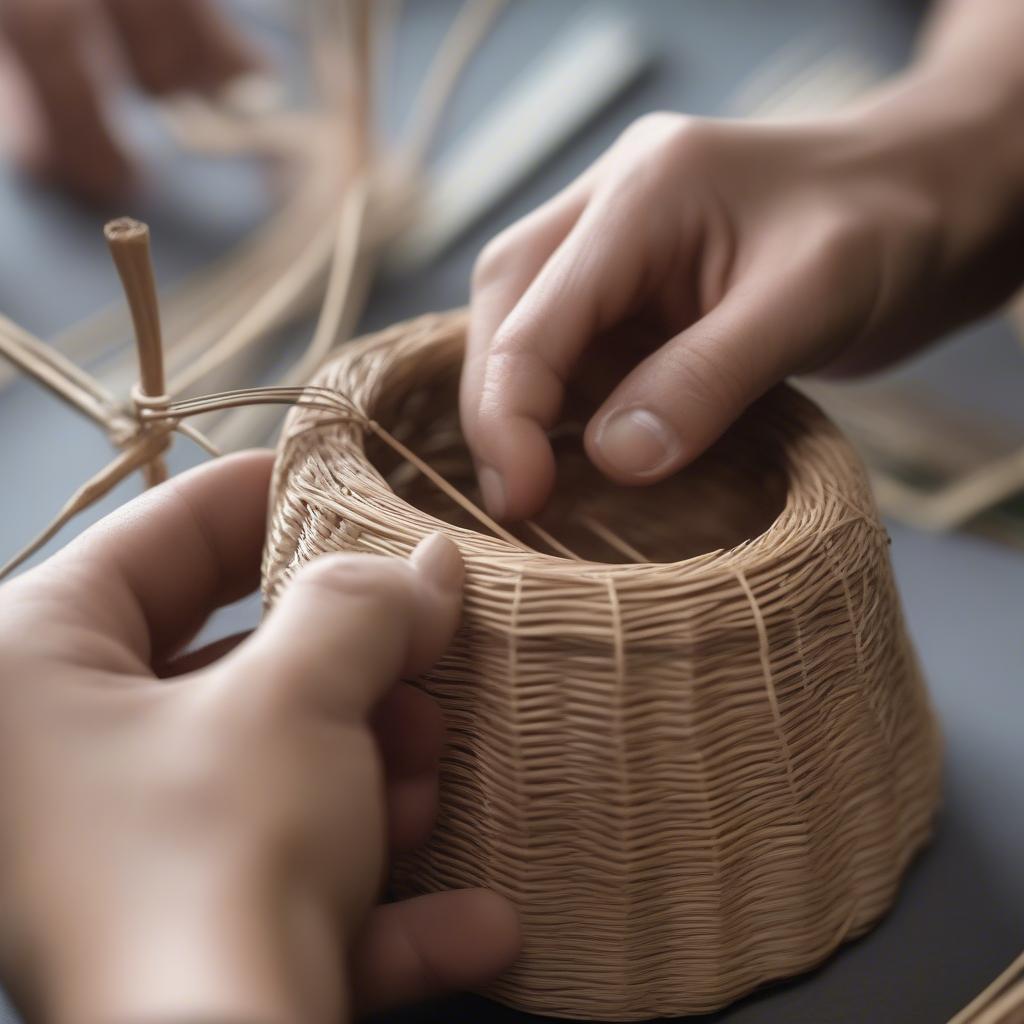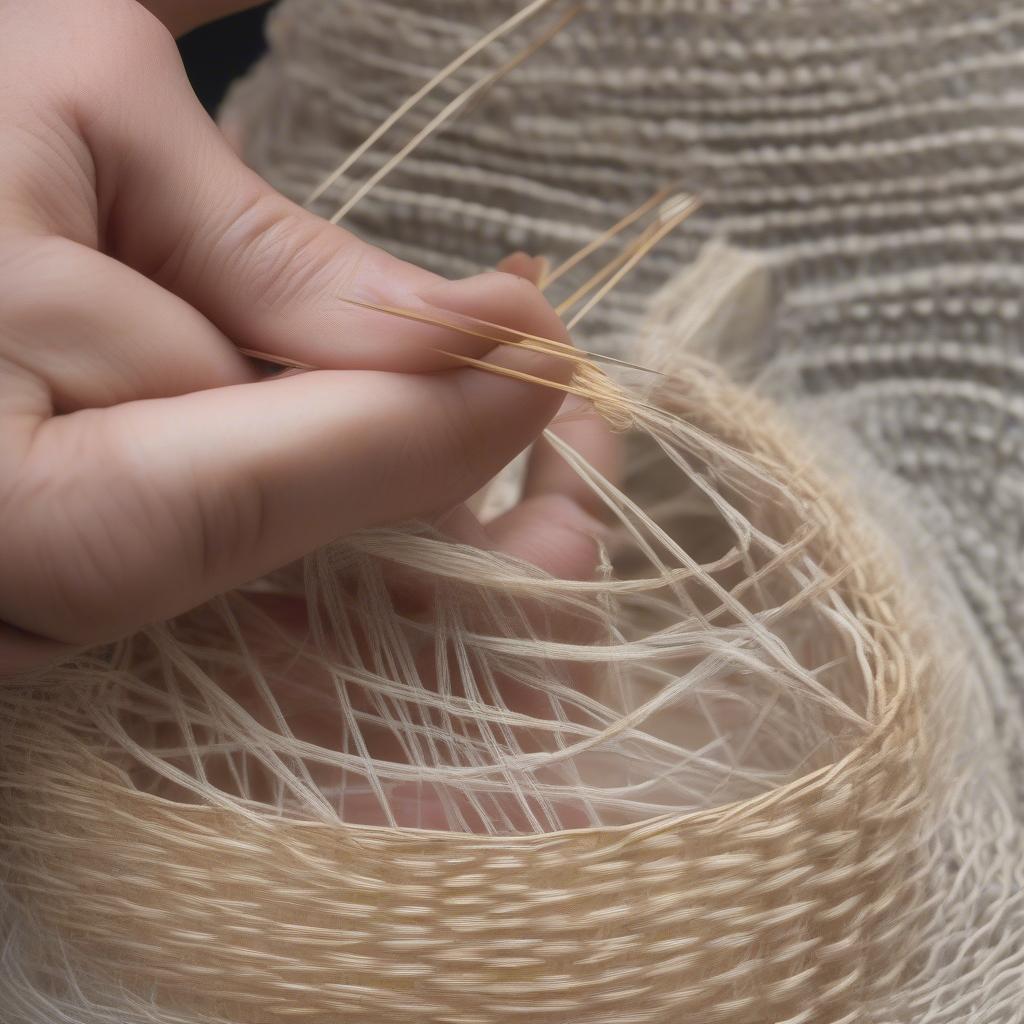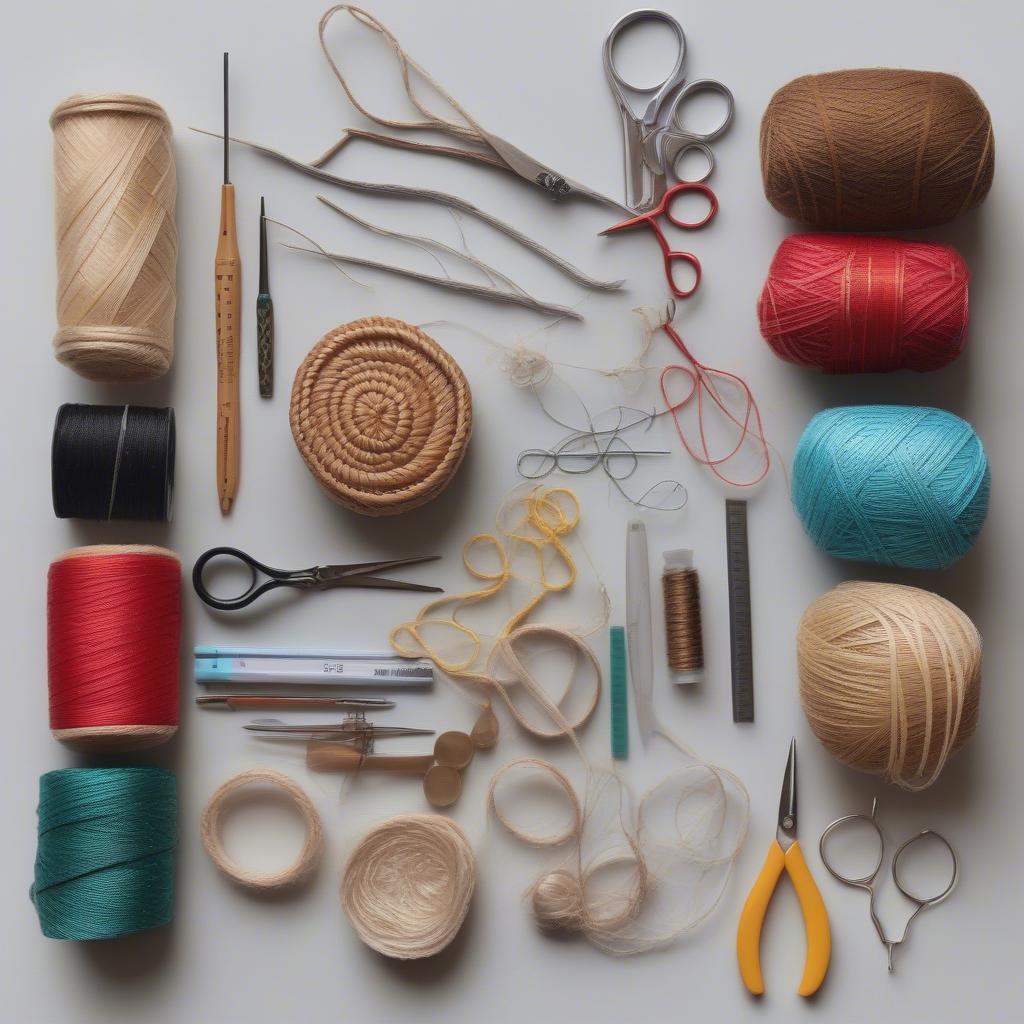Basket Weaving
Weaving Tiny Baskets: A Detailed Guide to Miniature Basketry
Weaving Tiny Baskets is a captivating craft that combines intricate handiwork with artistic expression. This guide explores the art of miniature basket weaving, offering tips, techniques, and insights for both beginners and experienced artisans. Learn how to create these delicate masterpieces, from selecting the right materials to mastering the essential weaving patterns.  Weaving tiny baskets using natural materials like wicker and reed.
Weaving tiny baskets using natural materials like wicker and reed.
Materials for Miniature Basket Weaving
Choosing the right materials is crucial for successful tiny basket weaving. While traditional basketry often uses reed, willow, or cane, miniature baskets can be crafted from a variety of materials, including waxed linen, embroidery floss, and even fine wire. Miniature green frost basket weave basket projects offer a delightful starting point for aspiring miniaturists. These materials offer flexibility and strength, allowing for intricate designs and delicate details. What materials are best for tiny basket weaving? Opt for fine, pliable materials like waxed linen, embroidery floss, or even fine wire for intricate detail. miniature basket weaving resources often provide detailed information about material selection and preparation.
Essential Weaving Techniques for Tiny Baskets
Several weaving techniques are particularly well-suited to creating tiny baskets. The most common techniques include twining, coiling, and plaiting. Twining involves twisting two or more strands together, while coiling builds the basket around a central core. Plaiting, similar to braiding, interlaces multiple strands to form a flat or three-dimensional structure. Mastering these basic techniques opens up a world of possibilities for miniature basket designs.
Twining Techniques for Tiny Baskets
Twining creates a strong and decorative surface, ideal for miniature baskets. Start by securing several warp strands to a base, then weave the weft strands over and under the warp, twisting them as you go. This creates a tight, textured surface that is both beautiful and durable.  Close-up of twining technique for miniature basketry
Close-up of twining technique for miniature basketry
Coiling Techniques for Tiny Baskets
Coiling is a versatile technique for creating miniature baskets of various shapes and sizes. Begin by wrapping a core material with a thin strand, gradually building the basket upwards in a spiral. This technique is particularly well-suited for creating round or oval baskets.
Plaiting Techniques for Tiny Baskets
Plaiting, often used to create flat surfaces, can also be adapted for miniature basketry. By interlacing multiple strands in a specific pattern, you can create intricate designs and textures. This technique is perfect for adding decorative elements to your miniature baskets.
Design Considerations for Weaving Tiny Baskets
When weaving tiny baskets, consider the scale and proportions of your design. Miniature basket weaving requires attention to detail and precise execution. Think about the overall shape, size, and intended use of your basket. What are some design considerations for miniature baskets? Think about scale, proportion, and intended use. Will it hold miniature flowers or simply serve as a decorative element? Exploring what is basket weave can provide a deeper understanding of the possibilities and limitations of different weaving techniques.
“Miniature basket weaving is a rewarding craft that challenges your creativity and dexterity,” says renowned miniature artist, Amelia Craftwell. “It’s a meditative process that allows you to create beautiful and intricate works of art on a tiny scale.”
Troubleshooting Common Issues in Miniature Basket Weaving
Even experienced weavers encounter challenges in miniature basketry. Common problems include uneven tension, loose strands, and difficulty achieving the desired shape. Patience and practice are key to overcoming these challenges. What are some common challenges in miniature basket weaving? Uneven tension and loose strands are common issues. Patience and practice are key to achieving the desired results.
“Don’t be discouraged by mistakes,” advises Ms. Craftwell. “Every challenge is an opportunity to learn and improve your skills. Embrace the imperfections and enjoy the process.”  Various tools and materials used in miniature basket weaving.
Various tools and materials used in miniature basket weaving.
Conclusion
Weaving tiny baskets is a fascinating craft that offers endless creative possibilities. From selecting the right materials to mastering the essential weaving techniques, the journey of miniature basketry is both challenging and rewarding. miniature green frost basket weave basket provides further inspiration for those interested in exploring the world of miniature crafts. By embracing the intricacies of this art form, you can create miniature masterpieces that showcase your skill and artistic vision.
FAQ
- What is the best material for beginners in miniature basket weaving?
- Which weaving technique is easiest for tiny baskets?
- How do I maintain even tension while weaving tiny baskets?
- What are some common mistakes to avoid in miniature basket weaving?
- Where can I find inspiration for miniature basket designs?
- What tools do I need for miniature basket weaving?
- How long does it take to weave a tiny basket?
How do you start a tiny basket weave? Choose your material and decide on a weaving technique. Then, create a small base and begin weaving upwards. How can you prevent loose strands when weaving tiny baskets? Maintain consistent tension throughout the weaving process and use a small needle to tuck in loose ends.
Looking for more information? Check out our articles on miniature basket weaving materials and advanced basket weaving techniques.
For further assistance, please contact our 24/7 customer service team via Hotline: +84 388 951 999 or visit our offices at Hanoi, Vietnam or Tech Avenue, Suite 12, San Francisco, CA 94105, USA.
